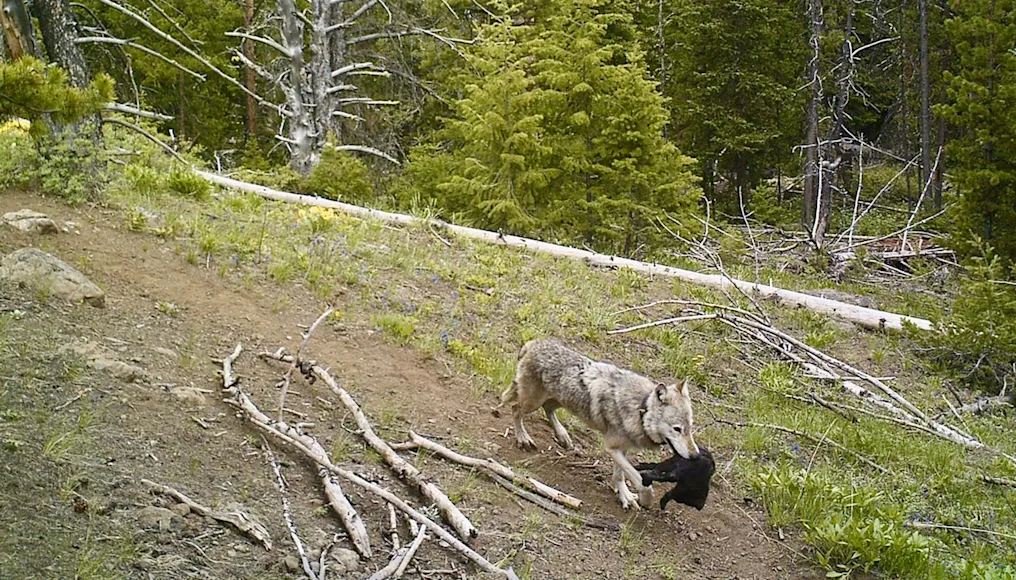New research is improving scientists’ understanding of gray wolf behavior. A study recently published in the journal Current Biology shows that wolves can abandon their dens with their young in tow to follow migrating elk. It upends previously accepted assumptions that wolves could not migrate during the spring because of their immobile offspring.
The study, titled “Wolves use diverse tactics to track partially migratory prey,” was led by UC Berkeley researcher Avery Shawler in partnership with the Wyoming Game and Fish Department. The monitoring project began in 2019 and extended to 2021. In total, researchers used GPS collars to track the movements of 19 gray wolves and 99 elk of the Cody elk herd in the eastern Greater Yellowstone Ecosystem, particularly the Absaroka Mountains.
Shawler and her team investigated the kill sites of gray wolves during the course of the monitoring. What they found surprised them. While some of the wolf packs spent the spring near den sites, others temporarily “commuted” from their dens to hunt migratory elk. Others shifted their “homesites” entirely to follow the elk. Some employed several of these behavioral strategies over the course of a season.
The researchers captured a game cam image of a wolf carrying a young pup while migrating to a new location in June 2020. “The first time I saw a camera trap photo of a wolf carrying its pup, I just cracked up because the pup is being carried by its butt,” said Shawler, in a press release. Shawler notes that the behavior is particularly risky given the proclivity of wolves to kill pups from other packs over territorial disputes.
“Our findings counter years of assumptions by researchers that migratory hoofed mammals can escape predation in spring because [their predators] are tied to dens and immobile offspring,” said Arther Middleton, another author on the study and a Berkeley professor of environmental science, policy, and management.
Read Next: Florida to Hold First Bear Hunt Since 2015
Knowing that migratory ungulates like elk can’t easily escape wolves during the spring could impact wildlife management decisions going forward, add the study’s authors. “Investigating how predators respond to prey with variable and flexible movement strategies is a vital first step to understanding … broader ecosystem dynamics,” wrote the authors. “As global change continues to disrupt migrations, anticipating shifts in predator-prey interactions will be essential for sustaining ecological function and guiding effective conservation strategies.”


